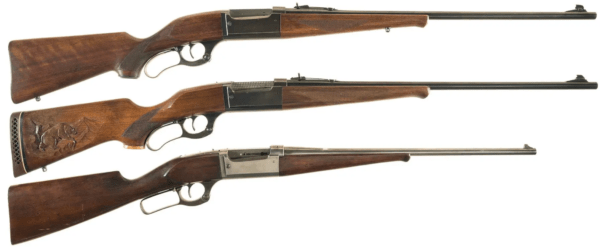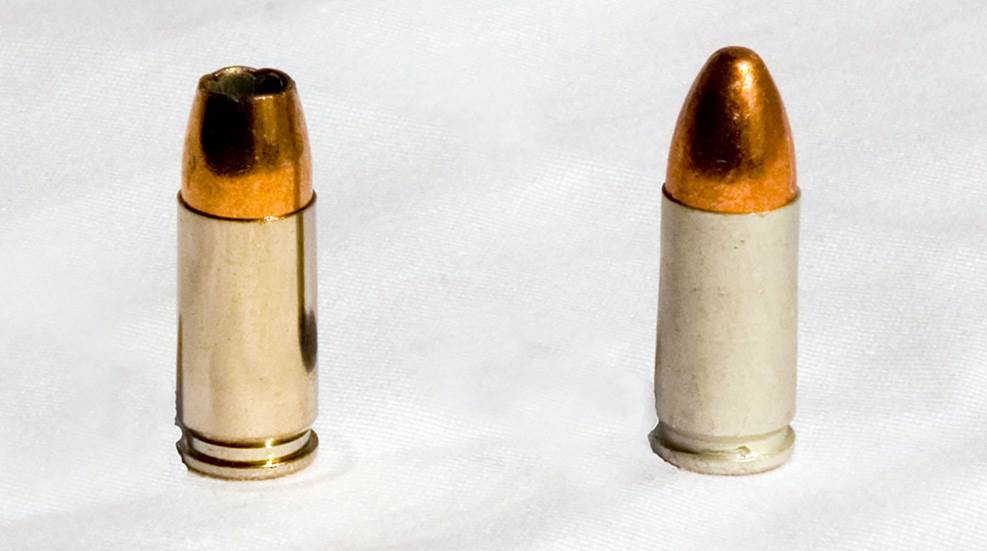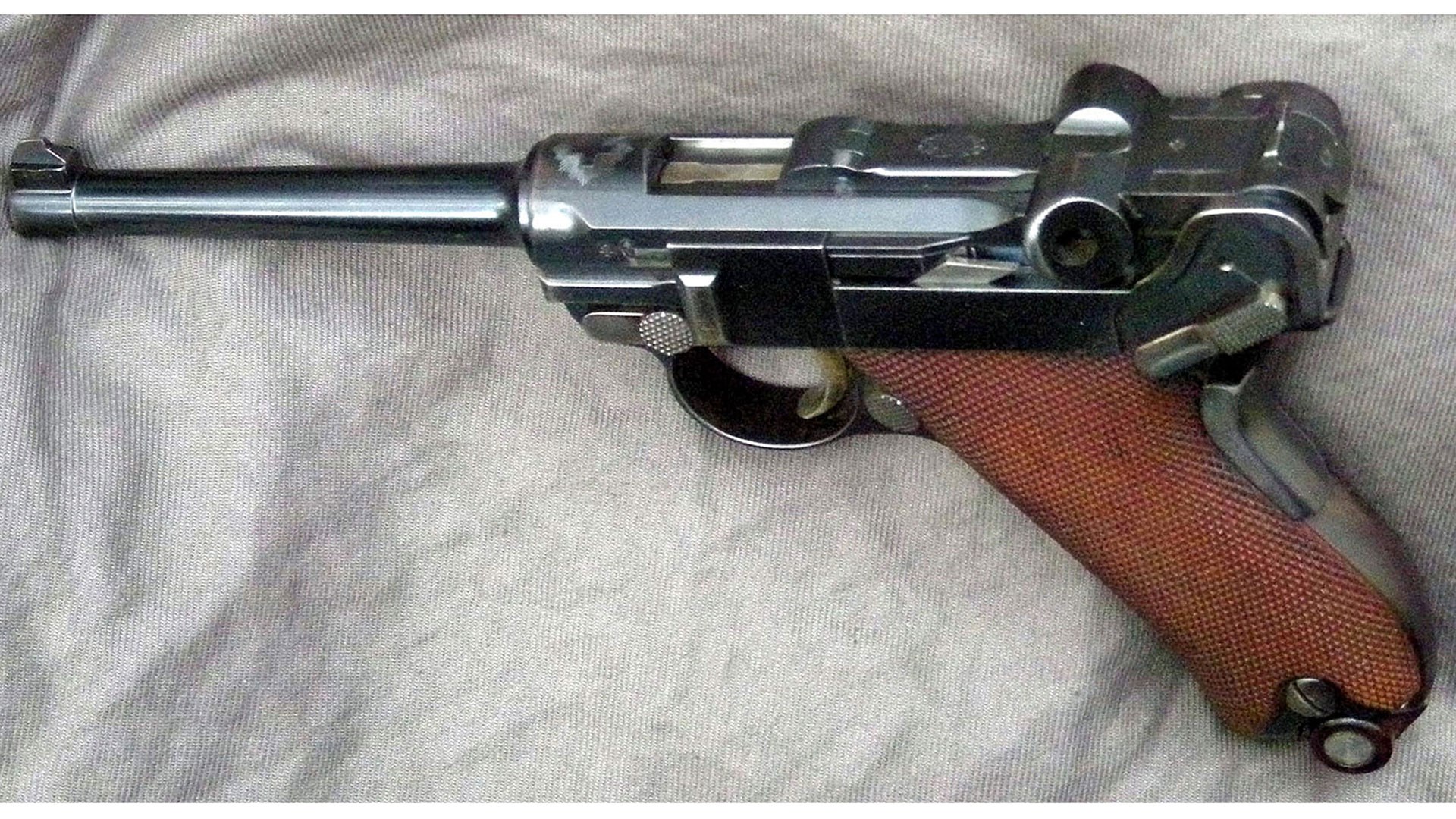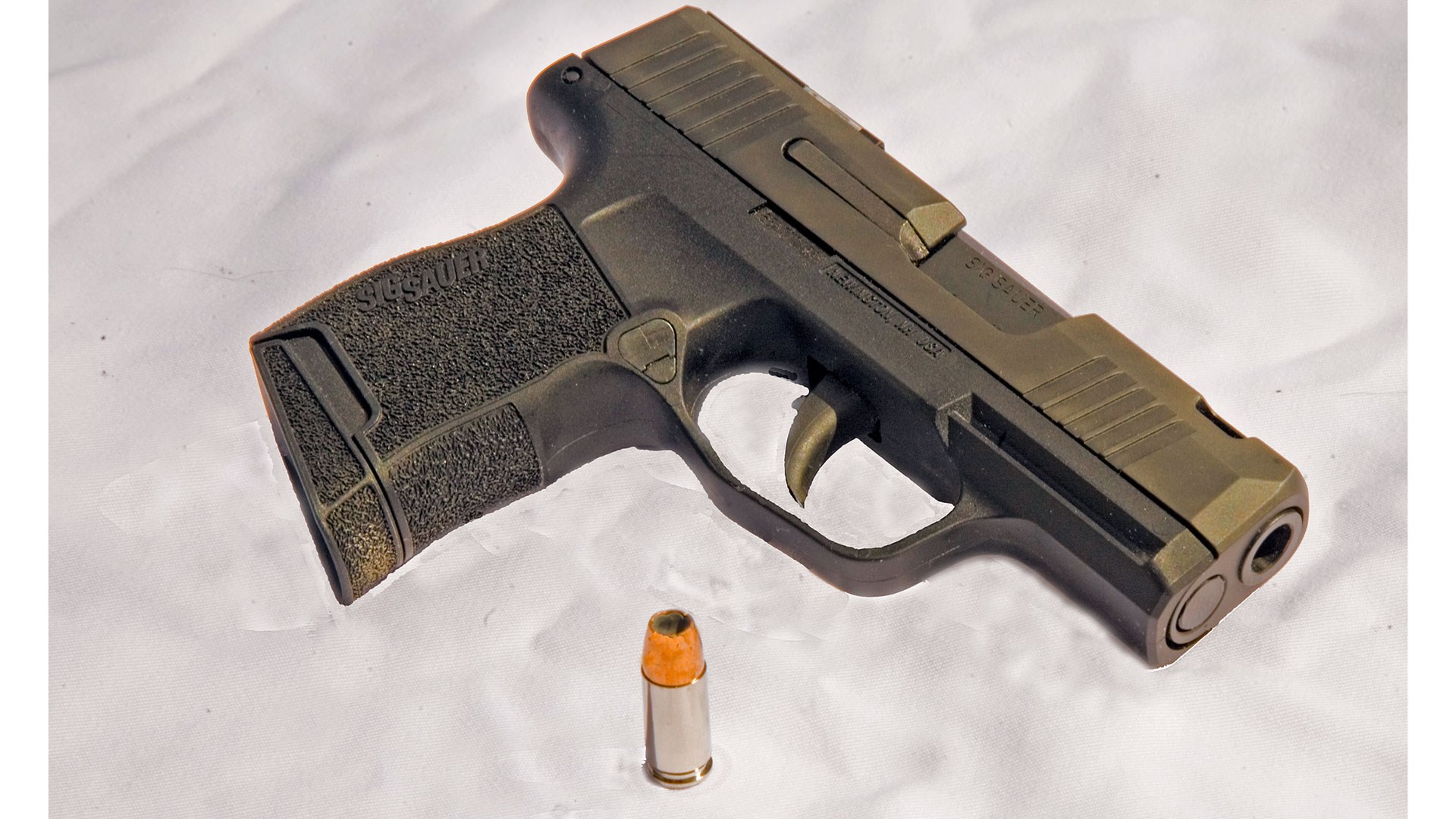Month: October 2021


She sure looks a lot like my wife too! Grumpy
Happy Birthday to the Savage 99!!
This Day in History: Savage 99 is Patented by

U.S.A. –-(Ammoland.com)- On October 3, 1899, Arthur Savage received US patent number 63,4034 for a firearm that would become known as the Savage Model 99. I’d be willing to bet that Mr. Savage was relieved when the patent was finally approved, since he had originally filed it almost a year and a half earlier on April 21, 1897.
With the Model 99, Savage had improved on his previous hammerless, lever-action rifle – the Model 1895, which was equipped with a rotary magazine that allowed it to fire pointed Spitzer-type rounds without the worry of accidental ignition in a traditional lever-action tubular magazine. The early variants of this new model still utilized the same rotary magazine as his Model 1895, but the Model 99 would eventually see the greatest improvement to date: a detachable box magazine. The models with this kind of magazine were designated the Model 99C.
Born in Kingston, Jamaica, Arthur Savage was an exceptionally interesting fellow. When he was in his 30s, which was during the late 1880s, Savage moved his family to Australia as homesteaders. While it certainly wasn’t an easy move or lifestyle change, it paid off handsomely when he eventually laid claim to owning the largest cattle ranch in Australia at that time.
Not content, Arthur Savage sold the ranch and moved his family again. This time, they went back to Jamaica where he had purchased a coffee plantation. By 1892, Arthur and his family had moved from Jamaica to Utica, New York, where he took a job with a small railroad and another part-time job at the Utica Hammer Magazine Company, which was a gun factory.
Within two years, he had opened his own gun company, Savage Arms, and began travelling down the road that would eventually make his last name a household word in the gun community.
There was no guarantee of success, however, when he first started out. His Model 1895 was part of a new military trial, but was eventually beaten out by the Krag–Jørgensen. In 1896, he won a contract with the New York National Guard, but it was cancelled due to political controversy.

Without the security provided by a military contract, Savage quickly pivoted from that angle and shifted his attention to the hunting community. Here, the Model 99 truly thrived. It would eventually be available with a wide variety of options, such as special length barrels (up to 30 in.), pistol grip stocks, checkering, woods, plating, grades of engraving, sights, etc. By 1905, not only were there a bunch of special options, but now there were a wide variety of model designations. These included the 1899A2, CD, BC, AB, Excelsior, Leader, Crescent, Victor, Rival, Premier, and Monarch, which was considered to be the top-of-the-line model. Prices ranged from $21 to $250, which was quite a range!
Eventually, it was chambered for a wide variety of cartridges including .303 Savage, .32-40 Winchester, .300 Savage, .30-30 Winchester, .25-35 Winchester, .250 Savage, .22 Savage Hi-Power, .22-250 Remington, .243 Winchester, .308 Winchester, .358 Winchester, 7mm-08 Remington, .284 Winchester, .38-55 Winchester, .375 Winchester, and even the .410 shotgun shell.

The gun would be in production for (fittingly) 99 years, with production halting in 1998. Today, the guns are prized by shooters, hunters, and collectors alike, and they can fetch hefty sums depending on the right variation and special features. For example, an elaborately engraved, inlaid, and carved Monarch variant sold in 2016 for $540,500. Another exquisite model – engraved, inlaid, carved, and cased – that belonged to automaker Horace Dodge also sold in 2016 for $195,500.
Even though Arthur Savage had to wait quite a long time before his patent for the Model 1899 was finally approved, it certainly proved to be worth it in the long run.
About Logan Metesh
Logan Metesh is a historian with a focus on firearms history and development. He runs High Caliber History LLC and has more than a decade of experience working for the Smithsonian Institution, the National Park Service, and the NRA Museums. His ability to present history and research in an engaging manner has made him a sought after consultant, writer, and museum professional. The ease with which he can recall obscure historical facts and figures makes him very good at Jeopardy!, but exceptionally bad at geometry.
It’s tough to watch a good company inexplicably damage their brand. Until very recently, Troy Industries had an excellent reputation in the shooting sports community as a manufacturer of quality accessories for the M4/M16/AR-15 family of firearms. Unfortunately, the company’s bungled handling of two employee issues in recent weeks has damaged the company’s brand among a shooting public with long memories and little sympathy for those who abuse their trust. Troy Asymmetric, a training division of Troy Industries, first came under fire for hiring an anti-gun police chief. The company was then apparently less than honest about the terms of his departure, in what appeared to be an attempt to insulate Troy Industries from the hiring decisions at Troy Asymmetric. That breach of trust by caused some to look deeper into the instructor roster at Troy Asymmetric, where they discovered Dale Monroe. Monroe was a former FBI HRT sniper that played a small role in the debacle at Ruby Ridge as a spotter for infamous sniper Lon Horiuchi. The incident remains a sore spot for many who think Horiuchi got away with murder when he shot and killed Vicki Weaver while she was holding a baby in her arms. Instead of cutting their losses a second time and firing Monroe as well, company founder Steve Troy dug in and supported his employee. While it can be argued that Mr. Troy make a principled stand in support of Monroe, the customer base has not been sympathetic. A backlash against Troy seems to have started, though how widespread of a backlash there may be far from certain. Hammerhead Armament announced on its blog that they are now boycotting Troy’s products. Frankly, Troy isn’t going to notice when smaller retailers like Hammerhead Armament takes such a stand, not in terms of sales. Where they are going to notice the damage to their brand is if other retailers and some distributors begin joining the boycott along with customers already going out on some Internet shooting forums, and a small movement becomes an industry-wide shunning.
I thought Covid killed everyone
FBI Reports Most Murders in Decades, Police Point to George Floyd Fallout

The Federal Bureau of Investigation released crime data Monday showing a sharp spike in homicides in 2020.
While some crimes diminished in the unusual, COVID-shutdown year, homicides rose nearly 30% and aggravated assaults rose more than 12% in one year, the first time in four years that violent crime increased from the previous year.
There were about 21,500 murders reported in 2020, the highest figure in decades.
“In 2020, there were an estimated 1,277,696 violent crimes,” the FBI said. “When compared with the estimates from 2019, the estimated number of robbery offenses fell 9.3 percent and the estimated volume of rape (revised definition) offenses decreased 12.0 percent. The estimated number of aggravated assault offenses rose 12.1 percent, and the volume of murder and nonnegligent manslaughter offenses increased 29.4 percent.”
Violent crime rose more than 5% in 2020 while property crimes dropped nearly 8%, continuing an 18-year downward trend of property crimes.
 “The 2020 statistics show the estimated rate of violent crime was 387.8 offenses per 100,000 inhabitants, and the estimated rate of property crime was 1,958.2 offenses per 100,000 inhabitants,” the FBI said. “Nationwide, there were an estimated 6,452,038 property crimes. The estimated numbers for two of the three property crimes showed declines when compared with the previous year’s estimates. Burglaries dropped 7.4 percent, larceny-thefts decreased 10.6 percent, while motor vehicle thefts rose 11.8 percent.”
“The 2020 statistics show the estimated rate of violent crime was 387.8 offenses per 100,000 inhabitants, and the estimated rate of property crime was 1,958.2 offenses per 100,000 inhabitants,” the FBI said. “Nationwide, there were an estimated 6,452,038 property crimes. The estimated numbers for two of the three property crimes showed declines when compared with the previous year’s estimates. Burglaries dropped 7.4 percent, larceny-thefts decreased 10.6 percent, while motor vehicle thefts rose 11.8 percent.”
U.S. residents lost an estimated $17.5 billion to property crimes last year, not including arson damage.
Police experts have tied the increase in violent crime to the reduction in police forces and rioting in the aftermath of the death of George Floyd in Minneapolis while in police custody.
“The sharp increase in murder that began with the riots and lawlessness of last summer come as no surprise,” said Jason Johnson, president of the Law Enforcement Legal Defense Fund. “Seeing this troubling number now officially recorded for history gives us a fresh opportunity to examine the root political and cultural causes for this historic rise in unnecessary loss of life. We can begin by acknowledging the fact that police and enforcement of the rule of law, with accountability for lawbreakers, are essential to protect our most vulnerable communities.”
“Black and Brown communities are the real victims of these policies. Their lives are being lost and continue to be put in jeopardy,” he added.
– – –
Casey Harper is a contributor to The Center Square and a Senior Reporter for the Washington, D.C. Bureau. He previously worked for The Daily Caller, The Hill, and Sinclair Broadcast Group. A graduate of Hillsdale College, Casey’s work has also appeared in Fox News, Fox Business, and USA Today.
Photo “George Floyd Riots” by Chad Davis. CC BY-SA 2.0.
———————————————————————————- Gee lets me see now. You stick folks into their homes for good knows how long. Maybe take away their jobs and business with no end in sight. Throw in some Family feuds, drugs or lack of and some booze. Plus have the Media keep pounding away with the same old song. We are all gonna die unless what ever happens. Throw in some Clowns in Power who can’t seem to get their shit together. So I don’t know but it seems a perfect storm to me for some violence. Grumpy

Georg Luger was an interesting man. Born into a rather privileged family on March 6, 1849, his father was a renowned surgeon, so Georg was schooled in Italy. He later studied business at studied at the Wiener Handelsakademie (Vienna Commercial Academy). In 1867 he enlisted into the Austria-Hungary 78th Infantry Regiment as a reserve officer cadet. It was here that he showed his superior marksmanship skills which garnered him an assignment to Austro-Hungarian Military Firearms School at Camp Bruckneudorf.
Soon he became an instructor there. Automatic firearms were in its infancy, but the idea fascinated Luger, and he took an active role in developing automatic loading firearms. After his military stint Luger floated around a bit surviving on jobs like an accountant at a jockey club. He met Austrian firearms engineer Ferdinand von Mannlicher during this time, and the two worked together on developing rifle magazines.
By 1891 Luger had found employment with Ludwig Loewe & Company, Berlin, Germany, eventually working his way into a design consultant. After Ludwig Loewe’s death, the company became Deutsche Waffen und Munitions Fabriken (DWM), and was the manufacturer of the Hugo Borchardt-designed C-93 pistol. Luger was tagged with demonstrating it to the U.S. Army.
Though rejected, Luger carefully recorded the criticisms the army had with the pistol and returned to DWM. Borchardt disallowed the criticisms, which included unwieldly overall handling because of its weight and nearly vertical grip, excessive recoil from the 7.65×25 mm Borchardt cartridge, as well as being too expensive to mass produce, and refused to make any design changes. The job was then given to Luger to integrate the improvements.
Luger shortened the cartridge to 21 mm, calling it the 7.65×21mm Parabellum—Parabellum meaning “prepare for war.” This allowed him to lighten and shrink the size of the toggle-link system of the C-93, shorten the stroke of the toggle, design a narrower angular grip that helped balance the pistol better in the hand and offer a more natural pointing of it. The result was the Luger Parabellum pistol of 1898.
 A Model 1900 Parabellum pistol. These Swiss military service pistols were introduced in 1900 and chambered in 7.65×21mm Parabellum. The engraving of the Swiss cross “in splendor” (rather than as a coat of arms) indicates that this pistol was built before 1909. Photo from Hmaag.
A Model 1900 Parabellum pistol. These Swiss military service pistols were introduced in 1900 and chambered in 7.65×21mm Parabellum. The engraving of the Swiss cross “in splendor” (rather than as a coat of arms) indicates that this pistol was built before 1909. Photo from Hmaag.
Production began in 1900, and Switzerland immediately adopted the Pistole Parabellum in 7.65×21mm, a.k.a. 7.65 Parabellum and .30 Luger. The cartridge has been popular in Europe and the U.S., as well as Brazil. European police agencies used this cartridge well into the 1960s, however Germany led the move to upsize the power by increasing the bullet diameter to 9 mm, the weight of the standard bullet from 93 to 116 grains while retaining a nominal muzzle velocity of 1,200 fps from a 4.25″ barrel.
The case was shortened from a net 21.59mm to a net of 19.15mm by removing the bottleneck while retaining the taper of the parent case. The result was the 9x19mm Parabellum or 9mm Luger, developed in 1901. To say that the 9mm Luger has been a success would be a severe understatement. The cartridge is, without a doubt, the most popular pistol and submachine gun cartridge in the world since the end of World War I. It has a lot going for it. First, it is effective, especially in its military role.
Newer developments in propellant and bullet design have increased its effectiveness, greatly providing even more incentive to those needing a firearm for personal defense. Pistols made for the cartridge have not been overly burdensome, and more recent developments in sub-compact handgun design allow the full-size service pistol cartridge to be crammed into astonishingly micro-weight pistols that are easy to carry. The 9mm Luger is accurate enough for the target range and the roil is light enough to be controlled by most. The array of different firearms produced in this chambering is almost incomprehensible.
Not only has it been chambered into the beautifully engineered and produced Luger P-08 and Browning Hi-Power P35 pistols, it has been at the forefront of handgun design for more than a century. The first successful double-action, locked-breech, semi-automatic pistol, the Walther P-38, is chambered in 9mm Luger. Even revolvers, both double- and single-action, have been chambered or co-chambered in 9mm. In short, any gun enthusiast worth his or her salt that wants to shoot something prevalent and inexpensive should have something chambered in 9mm.
 One of the many more recent sub-compact handguns to hit the market chambered for 9 mm, the SIG Sauer P365.
One of the many more recent sub-compact handguns to hit the market chambered for 9 mm, the SIG Sauer P365.
In the early days of World War II, Commonwealth countries developed and adopted a higher-pressure loading of the 9x19mm cartridge. Designated the 9 m/m ball MK 1z (Commonwealth nomenclature), it soon became the standard loading for modern firearms like the Browning Hi-Power and Sterling submachine guns. This load featured a 116-gr. bullet at a claimed 1,300 f.p.s. Canada put together a similar, but slightly softer load clocking in the mid-1,200s in 1955. It was adopted as the standard NATO load in 1962.
After the 1986 FBI Miami shootout between eight FBI agents and two murderous bank robbers, it was found that despite a 4-to-1 one advantage, the FBI lost two agents due in large part to the superior firepower of the criminals’ rifles versus the FBI’s .357 Mag. revolvers. A search began to find a better cartridge for revolvers as personal-defense weapons for agents and other law enforcement professionals.
Eleven years later, across the nation in North Hollywood, another pair of bank robbers stood off dozens of Los Angeles Police Department officers armed with 9mm pistols and .38 Spl. revolvers with a pair of Kalashnikovs. A dozen officers and members of the public were wounded during that 44-minute exchange. Along with other shootings, the incentive to build a firearm with a large magazine capacity and better stopping power led to the development of the so-called “Wonder-Nines.”
“Wonder Nine” is a term coined by writer Robert Shimek during this period. It referred to the “wonder” pistols of the day, chambered in 9mm Luger with double-column magazines holding at least 15 rounds. As much as anything, the popularity of the 9mm as a law-enforcement and personal-defense round in America is due to this evolution in firearms and cartridge design.
More recent bullet developments, along with some propellant improvements, have moved the 9mm ahead of such American stalwarts as the .45 ACP and .357 Mag. Mind you, the American cartridges are by no means obsolete, nor are they any less effective. In fact, some of these advances in bullet and propellant technology have rubbed off on those other cartridges. Regardless, the 102-year-old 9mm Luger is still on the throne as king of the pistol cartridges. I don’t see that changing in the near future.
Glock 18 Woods Walk
Why U.S. Gunmakers Could Soon Face New Competition
Samuel Colt’s venerable company is getting a new lease on life under European ownership.
Key Points
- Firearms demand is coming down from record levels but still experiencing significant growth.
- Czech gunmaker CZG’s acquisition of Colt gives it a major foothold in the U.S. firearms industry.
- CZG’s ownership of Colt and production of firearms at Colt factories will allow it to compete for U.S. military contracts under the Buy American Act.
CZG is now much better positioned to compete for law enforcement and military firearms contracts in the U.S., along with expanded civilian firearm sales. Aiming to double its revenue to $1 billion or more, it looks like competition will be ramping up for this industry.

IMAGE SOURCE: GETTY IMAGES.
The current firearms market
Firearms purchases seem to be slowing after 2020’s frenzy with sales growth for Smith & Wesson dipping to low double-digits in the fiscal 2022 first quarter after several periods of triple-digit growth. Earlier this month, firearms companies saw their stock prices rise after the Biden administration’s pick for ATF chief, David Chipman, failed to secure the support needed to cement his nomination. However, those small gains weren’t nearly enough to offset the steady decline shares have seen since June as investors respond to the news of an industry slowdown.
But sales are still growing despite the slowdown. Ammunition manufacturer Ammo reported solid second-quarter results in late August too. Both firearm and ammunition prices remain somewhat elevated due to continued strong demand intersecting with supply bottlenecks, though the price inflation has eased since 2020 and even early 2021.
CZG and Colt
While it has sold Czech-made firearms in the U.S. for years, including hunting rifles, semi-automatic pistols, and sporting rifles such as its civilian semi-auto version of the CZ Bren 2, CZG bought out Colt’s Manufacturing Company in early 2021. Colt, founded in the mid-19th century by the famous Samuel Colt, has had a long, checkered history, including many changes of ownership and multiple bankruptcies. It does, however, make several iconic firearms and has supplied the U.S. Army with multiple generations of the M-16 select-fire rifle platform, including the current M4 carbine. CZG launched its IPO last October, using the proceeds to buy out Colt in a deal that totaled $220 million in cash, plus approximately one million shares of CZG stock.
In an interview with firearms website TFB (TheFirearmsBlog), CZG’s president Lubomír Kovařík noted how the Colt acquisition provides a major expansion to the Czech company’s factory capacity. “CZG will gain an additional production capacity and expand its customer network in North America and other countries,” he said. He also pointed out how “[t]hrough Colt, CZG will become a supplier to Mil/LE customers and armed forces in the United States, including [the] U.S. Army.” He views the companies as synergistic with Colt having superior manufacturing and supply chain assets, while CZG brings top-notch research and development to the combined business.
Under U.S. law, only companies manufacturing guns in the U.S. can compete for American military contracts. Owning Colt will allow CZG to enter its firearms in the U.S. military procurement competitions. Colt lost a major contract with the American military in 2015, but half of its 2020 revenue still came from military and law enforcement sales, according to Reuters.
Czech analysts at Fio Banka predict CZG’s police and military sales in the U.S. will jump from 10% of U.S. sales to 50% thanks to the possibility of Colt contracts with the U.S. Army and other branches of the armed forces. CZG says the combined annual revenue of CZG and Colt total about $570 million, but it aims to expand this figure to more than $1 billion by 2025.
And the company is generating strong growth. Fiscal 2021 first-quarter revenue jumped 64% year over year, while EBITDA increased 117%. Net profits for the quarter beat analysts’ predictions by about 12% as well. To top it all off, CZG pays an annual dividend yielding about 1.6%, while its payout ratio sits at a very manageable 26%.
CZG’s plans to reach more than $1 billion in sales in just four years will still be a challenge for the company. Czech analyst Pavel Ryska from J&T Banka told Reuters he believes the target could be achieved if “the U.S. civilian demand remains robust and keeps rising, and second, CZG adds further production capacity either through its own [capital expenditures] or through additional acquisitions that are well executed.”
What this all means for American gumakers’ stocks
Neither Smith & Wesson nor Ruger have large-scale contracts with the U.S. Army or any other service branch. CZG’s takeover of Colt’s military supply role won’t affect either company’s business in this regard. Increased manufacturing capacity, however, plus the easier potential introduction of new CZG firearms made in the U.S. could win it additional law enforcement and civilian sales.
While CZG’s growth projections are dramatic, police and civilian sales are unlikely to significantly move the needle in opposition to Smith & Wesson or Ruger’s success, either. CZG is already competing with the two companies in these markets, meaning its effect on the competitive landscape is already priced in. Even with Colt’s catalog added to its own, nothing in CZG’s lineup is likely to revolutionize its civilian or police sales position.
Thus, the impact of CZG’s expansion on American firearms companies should be minimal. However, for those investing in the firearms sector of consumer durables stocks, CZG itself might be worth watching as a bullish choice if it ever applies for and attains listing on the NYSE or Nasdaq.
10 stocks we like better than Sturm, Ruger & Company, Inc.
When our award-winning analyst team has a stock tip, it can pay to listen. After all, the newsletter they have run for over a decade, Motley Fool Stock Advisor, has tripled the market.*
They just revealed what they believe are the ten best stocks for investors to buy right now… and Sturm, Ruger & Company, Inc. wasn’t one of them! That’s right — they think these 10 stocks are even better buys.